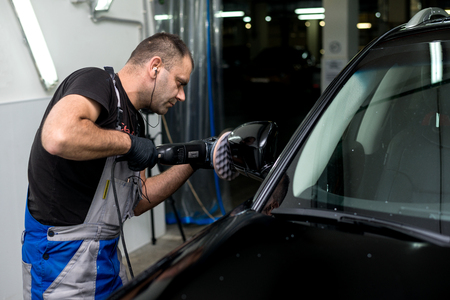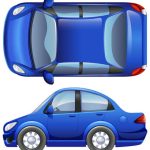1. Introduction to Brake Rotor Maintenance
Understanding the importance of brake rotors and their role in your vehicle’s braking system is essential for maintaining safe driving conditions. Brake rotors are a crucial component of your car’s braking system, working together with brake pads to slow down or stop your vehicle. Over time, they wear down due to heat, friction, and general use, which may lead to performance issues. When this happens, car owners face a common question: Should they resurface or replace their brake rotors?
Brake rotor maintenance is important not only for your car’s performance but also for your safety. If your rotors are worn out, warped, or uneven, your car’s braking efficiency may suffer, leading to longer stopping distances or even brake failure in extreme cases. Knowing when to choose resurfacing versus replacement can help extend the lifespan of your braking system while ensuring optimal performance.
To better understand the differences between resurfacing and replacing brake rotors, let’s first take a look at the common signs of rotor wear:
| Sign of Rotor Wear | Possible Cause |
|---|---|
| Vibration or Pulsation When Braking | Warped or uneven rotor surface |
| Squealing or Grinding Noises | Excessive wear or damage to the rotor |
| Visible Scoring or Grooves | Excessive friction and pad wear |
| Longer Stopping Distance | Reduced braking efficiency due to rotor wear |
Now that we understand the importance of brake rotors and how they affect your vehicle’s braking performance, we can dive deeper into the resurfacing and replacement options. In the next section, well explore how brake rotor resurfacing works and when its a good option.
2. What Is Brake Rotor Resurfacing?
Brake rotor resurfacing, also known as rotor turning or machining, is a process that involves removing a thin layer from the surface of the brake disc to create a smooth and even braking surface. Over time, brake rotors can develop grooves, uneven wear, and minor warping, which can cause brake vibrations, noise, and reduced stopping power. Resurfacing helps restore their functionality and prolongs their lifespan.
How Is Brake Rotor Resurfacing Done?
The resurfacing process typically involves the following steps:
- Inspection: The mechanic checks the rotors for wear, thickness, and deep damage.
- Mounting the Rotor: The rotor is placed on a brake lathe, a specialized machine designed for resurfacing.
- Machining the Surface: A cutting tool shaves off a thin layer of metal to remove imperfections and create a smooth, even surface.
- Final Inspection: Once resurfaced, the rotor is inspected again to ensure it meets the minimum thickness required for safe operation.
When Is Brake Rotor Resurfacing a Viable Option?
Resurfacing is a cost-effective solution in certain situations, but it is not always the best choice. Here are some factors to consider:
| Situation | Is Resurfacing a Good Option? |
|---|---|
| Minor surface imperfections (grooves, slight warping) | Yes |
| Brake pulsation caused by uneven rotor surfaces | Yes |
| Rotors close to or below the minimum thickness | No |
| Deep cracks or severe damage | No |
| Frequent overheating or excessive wear | No |
If the rotor is too thin or has severe cracks and damage, replacement is the safer and more effective option. Many modern vehicles also use thinner rotors that wear down faster, making resurfacing less practical.
Brake rotor resurfacing can extend the life of your braking system when done correctly, but its essential to assess whether it is the right choice based on the rotor’s condition and your driving habits.
![]()
3. When Should You Replace Your Brake Rotors?
Brake rotors don’t last forever, and while resurfacing can extend their life, there comes a time when replacement is the only safe option. Here are key signs that indicate you should replace your brake rotors instead of resurfacing them.
1. Excessive Rotor Thickness Variation
Brake rotors wear down over time, but uneven wear can create thickness variations that affect braking performance. If the rotors have worn below the manufacturer’s minimum thickness specification, replacement is necessary.
2. Deep Grooves or Scoring
Normal brake pad wear can leave minor marks on the rotors, but if you notice deep grooves or heavy scoring, resurfacing may not be enough to restore a smooth braking surface. In such cases, new rotors are usually required.
3. Severe Rust or Corrosion
Surface rust is common, but excessive corrosion can weaken the rotor’s structure, making it unsafe. If the rust has created pitting or compromised the metal’s integrity, replacement is the best option.
4. Warped or Heat-Damaged Rotors
Frequent hard braking or overheating can cause rotors to warp. This often results in vibration or pulsation when braking. If the warping is too severe, resurfacing won’t be effective, and replacement is needed.
5. Cracks in the Rotor
High temperatures and stress can cause hairline cracks in the rotor surface. Even small cracks can expand over time, increasing the risk of rotor failure. If you see cracks, replacing the rotor is the safest choice.
6. Signs That Rotor Replacement Is Necessary
| Issue | Why Replacement Is Needed |
|---|---|
| Excessive wear (below minimum thickness) | Resurfacing removes material, making an already thin rotor too weak. |
| Deep grooves or heavy scoring | Severe damage cant be restored by resurfacing. |
| Severe rust or corrosion | Structural integrity may be compromised. |
| Warping or heat damage | Resurfacing may not remove warping completely. |
| Visible cracks | Cracks can spread and lead to brake failure. |
7. How to Check If Your Rotors Need Replacement
To determine whether you need new rotors, inspect them visually for cracks, deep grooves, or rust. You can also measure their thickness using a micrometer and compare it to the manufacturer’s minimum specification. If youre unsure, have a professional mechanic assess your rotors.
If you notice any of these signs, replacing your brake rotors is the best way to ensure safe and effective braking performance.
4. Pros and Cons: Resurfacing vs. Replacement
When deciding between resurfacing or replacing your brake rotors, factors like cost, performance, and safety all come into play. Below, we compare the pros and cons of each option to help you make the best decision for your vehicle.
Cost Comparison
One of the biggest considerations for car owners is cost. Generally, resurfacing brake rotors is the cheaper option upfront since it involves machining down the existing rotors rather than purchasing new ones. However, resurfacing may not always be possible if the rotor is too thin or damaged.
| Option | Average Cost | Additional Costs |
|---|---|---|
| Resurfacing | $15 – $50 per rotor | Labor costs may apply |
| Replacement | $30 – $150 per rotor | May require new brake pads |
Performance Considerations
Resurfacing rotors can restore braking smoothness and reduce vibrations, but it does not improve braking performance beyond the original design. On the other hand, replacing rotors ensures you have brand-new, full-thickness metal, which can enhance braking performance, especially with higher-quality aftermarket options.
Safety Concerns
Safety is paramount when it comes to braking. Resurfaced rotors can still be safe if they meet the manufacturer’s minimum thickness requirements. However, thinner rotors are more prone to overheating and warping, which can lead to brake fade. Replacement ensures a fresh, full-thickness rotor, providing better heat dissipation and overall braking reliability.
Durability and Longevity
Resurfacing extends the life of your current rotors but removes material, making them more susceptible to wear over time. Completely replacing the rotors gives you fresh metal with a longer lifespan, reducing the need for frequent brake service.
5. Which Option Is Best for Your Car?
Deciding between brake rotor resurfacing and replacement depends on your vehicles condition, driving habits, and budget. Here are some key factors to consider when making the right choice.
Vehicle Condition
Your cars brake system condition plays a huge role in whether resurfacing or replacement is the best option. If your rotors have deep grooves, cracks, or are too thin, replacement is necessary. If they only have minor surface imperfections and are within thickness specifications, resurfacing can be a cost-effective choice.
Driving Habits
Consider how and where you drive:
- City Driving: Frequent stop-and-go traffic may cause rotors to wear out faster, making replacement a better long-term solution.
- Highway Driving: Less frequent braking means rotors may last longer and resurfacing could be a viable option.
- Heavy Loads or Towing: Additional stress on the braking system requires rotors that are in top condition, making replacement preferable.
Cost Comparison
Budget is another key factor. Here’s a general cost comparison between resurfacing and replacement:
| Option | Average Cost | Best For |
|---|---|---|
| Resurfacing | $15 – $25 per rotor | Minor wear and sufficient rotor thickness |
| Replacement | $50 – $150 per rotor | Severe wear, cracks, or excessive thinning |
Manufacturer Recommendations
Always check your vehicle’s owner manual or consult a trusted mechanic. Some modern cars have thinner rotors that are not designed for resurfacing, making replacement the only safe option.
Safety Considerations
Safety should be your top priority. If rotors are too worn or damaged, resurfacing may not provide reliable braking performance. In such cases, investing in new rotors ensures your car stops effectively, reducing the risk of brake failure.


